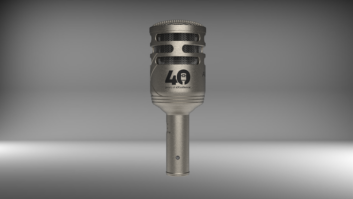
Engineering, is a 40-year veteran
of the music industry. Exit Plan
(www.exit-plan.ca), his consulting
firm, assists business owners to build
their companies and prepare them
for eventual sale.
Back in 2002–03, incited by the attack on the World Trade Center in September 2001, the United States declared war on Iraq. In doing so, it asked several countries to join the effort, including the United Kingdom and Canada. The story that was being fed to the media to mold public opinion and justify the war was that Iraq had developed weapons of mass destruction. The problem was that there was no proof, no smoking gun, only hearsay. The United States put significant pressure on other countries to join the effort. The UK joined in. Canada, where I live, did not.
I recall having several conversations about the war with our rep firm in Seattle. The discussion began with them saying, “I don’t know why the U.S. is doing this” and evolved a few months later into them asking, “Why isn’t Canada joining the U.S. in this war?” In the end, Iraqi president Saddam Hussein was taken out by the Iraqi people. The United States still has a presence in the country today. Neta Crawford, chair of the political science department at Boston University, in her “Costs of War” project, estimated the long-term cost of the Iraq War for the United States at $1.922 trillion. The point here is that public opinion is shaped by the media, whose stories are influenced by what those in power tell them is true. More to the point, people feel pressure when they do not conform to the majority. You are either with us or against us.
In the early 2000s, I had an idea for a product called the Recoil Stabilizer, a nearfield monitor isolator that uses a layer of foam to eliminate the resonance between the loudspeaker and the desk while including a mass element to stabilize the speaker from vibrating on the foam. After several rounds of trial and error, I finally came up with a recipe that I figured would work. But my fear was that ill-informed public reaction would kill the product before it got anywhere.
Back then, web chat rooms were all the rage and far-reaching opinions were rife. (It’s not that different today, but chat rooms have been replaced by the far more lucrative behemoths of Twitter and Facebook.) People would go online to do research on a given product and, more often than not, those who were putting out praise or disdain were nowhere near qualified to do so. There was a popular stereotype that opinions were dictated by dudes sitting in front of their computers in their underwear at 2 in the morning, expounding on products that they had never even seen. And because they were outspoken, they built up huge followings. This scared the hell out of me. I could predict what would happen: We would announce the product and naysayers would chime in before the first unit was even delivered.
I figured the only way around this would be to get some high-profile artists and engineers to endorse the product. To this end, we produced 20 sets of Recoils and sent them out to the best of the best. The response was overwhelming: Everyone loved them.
With endorsements in hand, we launched the product. As foretold, the negativity mob attacked the product, saying it didn’t work and was ridiculously expensive. “A piece of foam would do the same thing,” they claimed.
To my astonishment, the positivity mob rode over the hilltop like the cavalry in an old-time Western and blasted their guns at those who had never tried the product. One fellow in particular said, “Do you think Al Schmitt would endorse a product that doesn’t work?”
Fast-forward to today. While driving in Vancouver’s legendar y rush-hour traffic, I was listening to an interview with David Suzuki, Ph.D., a famous academic and environmentalist speaking of his life and, now that he is in his mid-80s, how he views the world today. Part of the discussion hit on the web and the incredible amount of information now available in the palm of your hand. Suzuki said it is at once astonishing and a serious problem. Look hard enough and you can find a website or chatroom that will corroborate just about any idea, no matter how outlandish, from Holocaust denial to global warming being a hoax.
All of these examples point to the same problem: Unless you take the time to check the source, you can easily be misled.
In the music business, we are tantalized by new products filled with promise. I recall an interface that claimed it would allow musicians to jam over the internet, yet the reality is that real-time jamming from separate locations is simply impossible (so far) because of internet latency, connection variables, and upload and download speeds. How do you know that what’s claimed is true? You end up reading online reviews that are all too often written by influencers who get free products in exchange for promoting those products. Are these influencers credible, or are the influencers themselves being influenced? Do they have the breadth of knowledge to speak from a position of authority?
I recall being so frustrated by magazine editors who would not give me the time of day when I was launching the Recoil Stabilizer and other products. How could they give preferential treatment in their magazine to a 64-channel digital console above my shiny green direct box? The nerve! Direct boxes are sexy! The only solution was to write our own stories and try to influence the world by advertising. Guilty as charged! We told the world why we were better, had endorsers expound the benefits of our direct boxes to gain credibility, and then, begging, got those difficult editors to write up whatever review we could get. If we were lucky, we were awarded a paragraph. I miss those guys. They were tough, saw through the marketing BS, and served their public by providing good, honest reporting.
We are living in crazy times, with some people in authority disparaging our very best and most ethical news sources. Yet these sources are critically important. It is the truth, the whole truth and nothing but the truth that should be told.







